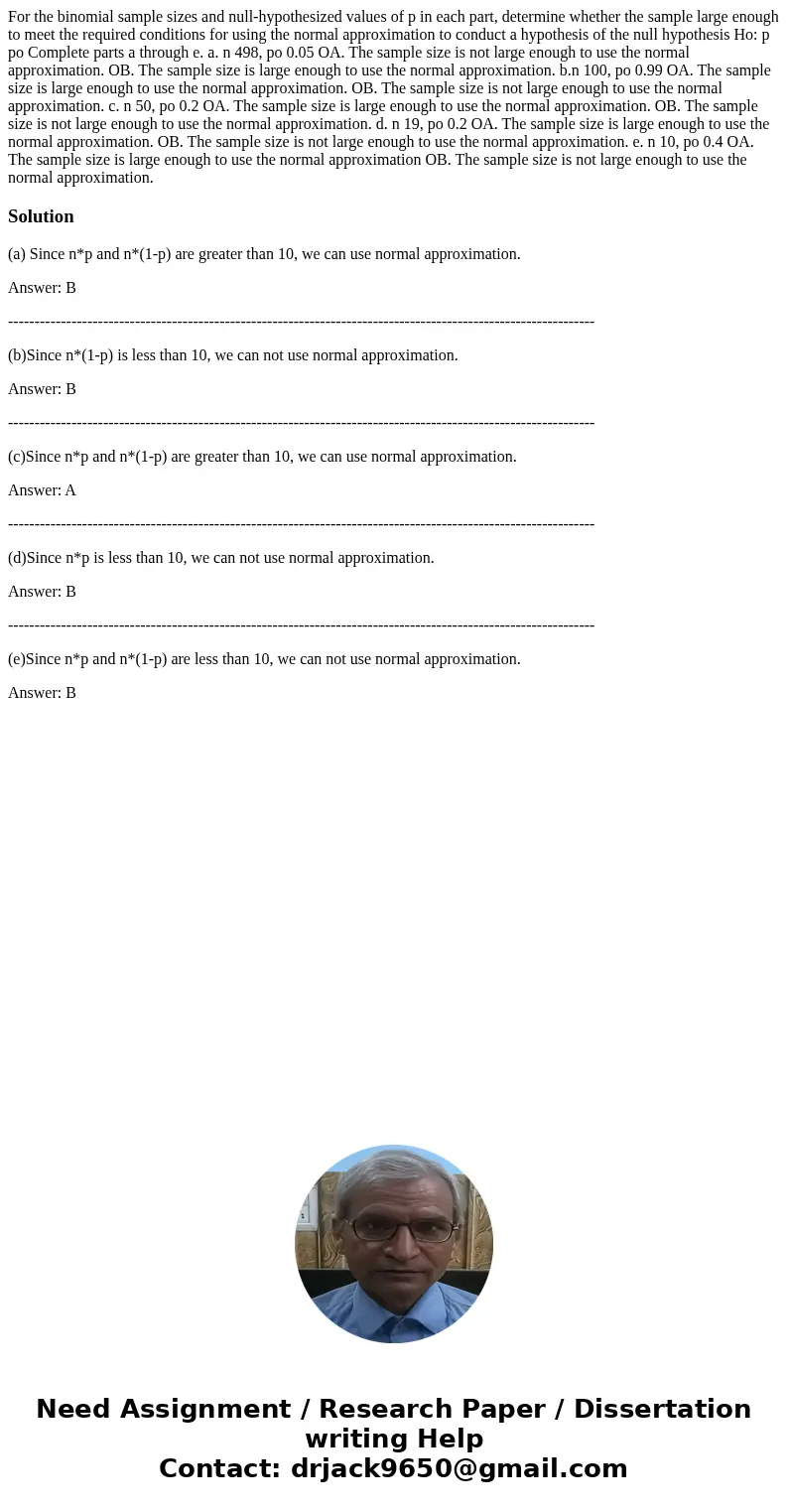For the binomial sample sizes and null-hypothesized values of p in each part, determine whether the sample large enough to meet the required conditions for using the normal approximation to conduct a hypothesis of the null hypothesis Ho: p po Complete parts a through e. a. n 498, po 0.05 OA. The sample size is not large enough to use the normal approximation. OB. The sample size is large enough to use the normal approximation. b.n 100, po 0.99 OA. The sample size is large enough to use the normal approximation. OB. The sample size is not large enough to use the normal approximation. c. n 50, po 0.2 OA. The sample size is large enough to use the normal approximation. OB. The sample size is not large enough to use the normal approximation. d. n 19, po 0.2 OA. The sample size is large enough to use the normal approximation. OB. The sample size is not large enough to use the normal approximation. e. n 10, po 0.4 OA. The sample size is large enough to use the normal approximation OB. The sample size is not large enough to use the normal approximation.
(a) Since n*p and n*(1-p) are greater than 10, we can use normal approximation.
Answer: B
---------------------------------------------------------------------------------------------------------------
(b)Since n*(1-p) is less than 10, we can not use normal approximation.
Answer: B
---------------------------------------------------------------------------------------------------------------
(c)Since n*p and n*(1-p) are greater than 10, we can use normal approximation.
Answer: A
---------------------------------------------------------------------------------------------------------------
(d)Since n*p is less than 10, we can not use normal approximation.
Answer: B
---------------------------------------------------------------------------------------------------------------
(e)Since n*p and n*(1-p) are less than 10, we can not use normal approximation.
Answer: B

 Homework Sourse
Homework Sourse